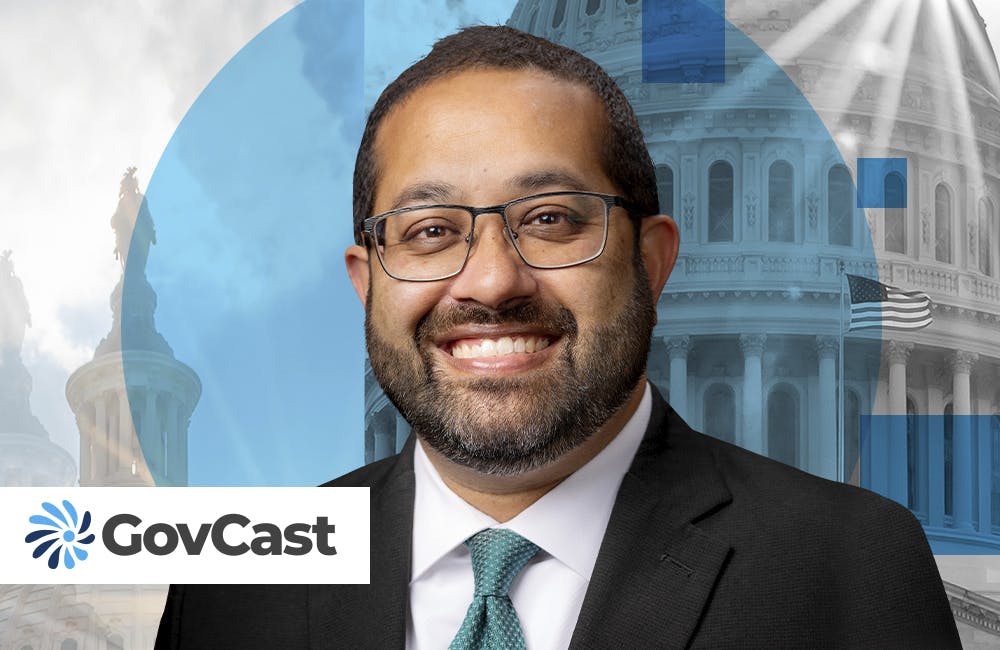DOD-VA Health Information Exchange Can Aid COVID-19 Vaccine, Opioid Crisis
Health information consolidation is laying groundwork for public health advances

The ongoing electronic health records collaboration between the Department of Veterans Affairs and the Defense Health Agency is laying the groundwork for improvements in patient care, as well as showing promising signs to help advance public health across the nation as a whole.
Representatives from the VA-Defense Department Joint Health Information Exchange noted the considerable progress that has already been made in the project’s implementation during a media roundtable last week.
“We’re live at 23 sites, we’ve got almost over 15,000 active users of the system,” said Holly Joers, program executive officer at Defense Healthcare Management Systems.
The potential benefits of this consolidation appear manifold — not only will implementation of the newly launched Cerner platform allow for smoother continuity of care when a soldier retires from service and begins receiving care through VA, but also the accompanying IT modernization within the DOD as a whole will allow for better provision of care in the field.
“It’s about transforming from a DOD perspective and transforming the Military Health System, to improve care and be able to get the data wherever it’s needed — whether that be for clinical decisions in the exam room, or whether that be at the point of care in the field in the theater operations, or data that’s needed to help make business decisions for how the Military Health System is run,” Joers said.
The lead up to the implementation of the Cerner electronic health records system and joint information sharing between VA and DOD has encouraged a broader program of modernization across both agencies to ensure the most effective adoption of the new platform, leading to updates across the underlying IT infrastructure as well as reforms in the training process for civil servants employed by both agencies.
“We’ve learned infrastructure has to be ready to go absolutely has to be ready to go. You’re not going to run a state of the art solution on an antiquated system or an infrastructure that needs to be updated. You got to bring the infrastructure up so that has been solidified,” said John Windom, executive director at the VA Office of Electronic Health Record Modernization. “We’ve also learned that the users have to be trained. This is absolutely about user adoption. I don’t care how good the technology is, if the users can’t effectively use it or efficiently use it to perform their duties, it’ll sit idly by in some corner and never be used, or they will resist using it.”
The EHRM modernization and data sharing between DOD and VA also appears to be paying dividends for advancing the health informatics and logistical preparedness necessary for mass distribution of the COVID-19 vaccine, with the methodology developed within government being shared with private health care providers as well.
“We looked at how we could do mass vaccination. We were already looking at that for readiness lines for our military, but also starting to look at how that applies for the COVID vaccine coming up. And, to be honest, the approach we’ve taken is also proliferating in the commercial world,” Joers said.
Additionally, the wealth of data and analytic processing allowed under the modernized DOD-VA health information exchange has shown considerable promise for providing emergency care and intervention for patients at risk of opioid overdose.
“Their work on an opioid registry was really critical this year, and it really came about from a DOD-VA partnership. What they’re able to do is take opioid registries and look at about 220,000 elements of data to determine whether the patient is at high risk for opioid overdose. So that algorithm actually provides notifications to a pharmacist to provide Naloxone on the spot … that’s all done automatically based on the data that is in and captured from the EHR and other health records,” Joers said.
This is a carousel with manually rotating slides. Use Next and Previous buttons to navigate or jump to a slide with the slide dots
-

DOD Has a New Cyber Resiliency Assessment Program
Defense officials tout the continuous assessment feature and scalability of the new program amid increased cyber threats.
5m read -

Transitioning Systems for Modern Agency Missions
IT modernization is a constant process necessary for improving customer service, mission delivery and collaboration.
40m watch -

Cyber Resilience and Recovery Amid Evolving Cyber Threats
Data durability is a key aspect of NIST’s cybersecurity framework for public and private organizations.
21m listen -

How Tech Enables Environmental Justice at EPA
The agency wants to eliminate bias and establish new tech standards to reduce greenhouse gas emissions.
39m listen








